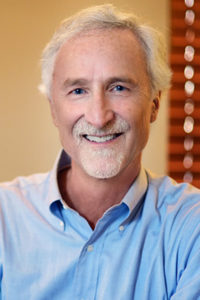Beyond Self-Care: Applied Neuroscience Can Help You Reclaim Joy in Legal Practice
By Kendra Brodin, Esq., MSW, Catherine Duncan MA, BCC., and Henry Emmons, MD

Kendra Brodin, JD, MSW is Founder & CEO of EsquireWell, a legal well-being and professional development company providing speaking, consulting, coaching, and the online EsquireWell Academy. As a certified coach with a master’s degree in social work, a law degree, and 20 years of experience in law firms and law schools, Kendra merges the “people” and “business” sides of the law as she guides legal organizations and their people to thrive now and in the future.

Catherine Duncan, MA, BCC companions people who are struggling with chronic illness, life transitions, and grief and loss in her private practice, LearningtoLive.org. A teacher, speaker, and writer focusing on mental and spiritual health, she draws on her experience as a hospice and hospital chaplain, her training in a range of complementary healing modalities, and her own brushes with death and awakening. Her first book, Everyday Awakening, will be published June 2023.

Henry Emmons, MD, is a psychiatrist who integrates mind-body and natural therapies, mindfulness and neuroscience into his clinical work. He is the founder of JoyLab.Coach and NaturalMentalHealth.com, offering trusted information and holistic products to help individuals of all ages build their resilience and rediscover joy. Henry is the author of The Chemistry of Joy, The Chemistry of Calm, and Staying Sharp.
You’ve likely heard the statistics and seen the warnings. It’s well-known that there is a mental health crisis in the legal profession. It began before the pandemic, but over two years of shutdowns and unpredictability have taken an additional toll. Recent surveys of attorneys show that problem drinking is worse in legal than in other professions, and mental distress, anxiety, and depression are also alarmingly high.
There are many complex underlying reasons that lawyers suffer substance misuse and mental health challenges at higher rates than many other professions. The “lawyer brain” is trained to look for issues, problems, and see what’s “wrong” (rather than “what’s right”). And, of course, the workload and intensity of the work can be crushing.
But what else might be happening?
Some have noted that one of the causes of the current crisis is a breakdown in resilience. Resilience is the innate capacity that we all have to face any challenges that come before us, to keep going even when those challenges are hard, and to get back up if we’ve been brought to our knees.
We all have resilience – we wouldn’t be here if we didn’t as we have all faced difficult challenges, not the least of which included a demanding educational journey, and “trial by fire” as we learned the practice of law and our roles in our organizations. But, there is a continuum of how much resilience individuals have with some people being much more resilient than others.
There are three things that determine where we each are on that continuum:
- Genetics
- Early childhood experiences
- Current stresses
We can’t change our genes (yet),or early childhoods (though we can modify the impact of our early childhood on our current lives). So, what can we do? We can respond more skillfully to our current stresses. We should all want to be as good at managing our stress as we can.
But is that enough? Even resilience may not be sufficient when you think about sustaining an entire career while managing the myriad challenges of today’s legal world.
It’s critical to go beyond good self-care and resilience (meaning, just hanging on and powering through what life throws your way) and get to the point of actually thriving, flourishing, and getting joy out of our work. Is that realistic and achievable? The answer is “yes,” though it might sound suspiciously optimistic. It’s actually based on sound science. Why settle for less?
Margaret Mitchell, who wrote Gone with the Wind, once said: “Every problem has two handles. You can grab it by the handle of fear, or the handle of hope.” So, let’s call this “the science of hope.”
Neuroscience: The science of hope
Broadly speaking, the burgeoning field of neuroscience offers many ideas, insights, and strategies. While there are techniques and tactics to be found in areas such as of third-wave cognitive-behavioral therapy, positive psychology, and the science of mindfulness, all of those branches live on the tree of neuroscience – the study of the mind and brain. Viewed accordingly, all offer powerful reasons to be optimistic about getting ourselves out of this crisis of well-being. This article focuses on the “hard science,” the findings from laboratory research and neuro-imaging studies that give us clues as to how to restore resilience and thrive.
For example, take “epigenetics.” This is a fairly new understanding of our genetic code. While fairly stable throughout our lives, our genetic code can also be influenced by a number of factors. If we have the genes for a certain illness, including depression or anxiety, they can be activated under certain adverse conditions. But they can also be turned off, or deactivated, with a return to health. What are some of the most powerful influences of this genetic expression? Long-term stress is a strong activator of illness genes, but cultivating positive emotions can help turn those same genes off again.
“Neurogenesis” refers to the brain’s ability to heal itself by creating new neurons from stem cells. We all have stem cells, and they are more or less active throughout our lives. When a new neuron is born, it needs certain conditions in order to survive and thrive. Exercise, for example, of the right type and intensity, is well-known for promoting neurogenesis. But there is an even more potent factor in helping these new cells establish themselves. Interestingly, each neuron must connect with many other neurons in order to thrive. That is an unmistakable metaphor since the quality of our own social connections is also essential for us to thrive.
One of the best-known aspects of the new neuroscience is called “neuroplasticity.” In essence, that means that our brains are “plastic” or malleable. They can be changed by creating new neural pathways. We’ve created our existing neural pathways largely through repetition. Some of our pathways serve us well. Others don’t. Since this all takes place at the level of thought, we can gain more mastery of this process, weeding out the negative paths and creating new healthy ones. This requires that we become more aware of our thoughts using strategies like a mindfulness practice.
Our brains are plastic and moldable. We all have the power to rewire and reshape our brain. Through an understanding of neuroscience, we can learn how to rewire our negative thinking minds (which lawyers are so prone to use), dissipate negative limbic loops, and create healthy new neural pathways in our brains.
In our work with legal professionals, we weave these and other lessons from neuroscience into a set of accessible, replicable practices that anyone can learn. Here are a few of our favorites.
Some Skills and Tactics to Use Starting Today
Calm Your Autonomic Nervous System
We can all learn to self-regulate and calm our nervous system. We can also learn the branches of the autonomic nervous system – parasympathetic, sympathetic, and dorsal vagal – and how we move naturally through these branches in our daily life. When we become dysregulated and move into a “fight, flight, or freeze” stress response, we can learn how to regulate our nervous systems, stimulate our vagus nerves, and calm our bodies. In our work with law firms, we explore some exercises to calm your nervous system including breathing, meditating, havening, and alternate tapping.
Here is an example of how to practice alternate shoulder tapping to calm your nervous system:
- Cross your arms over your chest so your hands rest on the opposite shoulders—right hand on left shoulder, left hand on right shoulder.
- Start alternately tapping your hands on your shoulders. Just breathe regularly as you continue tapping for ten minutes.
- Then stop and notice how you feel when you have finished.
If you have chronic stress, you can use this exercise daily. Try doing it five times a day, for ten minutes each time, for seven days. At the end of the seven days, notice whether you feel calmer and more relaxed during the day.
Embody Self-Compassion – Advanced Self-Care
Thisis a daily practice to create more ease and peace in our mind and body. We can learn how to move out of our busy thinking “ego mind” into our heart. When we grow our self-love and deepen our self-care, we open, heal, and flourish. Its can be difficult for lawyers who are accustomed to driving and pushing themselves and others with critical and harsh feedback. Self-compassion feels foreign and “soft,” but it’s actually more motivating and more effective than self-berating.
Here is one short exercise below to give you a sense of this practice:
- Notice. Start by noticing what are you thinking. By being present in the moment and consciously focusing on your breath, you are being mindful. From this place of mindfulness, you can learn how to respond to situations instead of reacting.
- Breathe. Take one to two minutes to notice your belly rising and falling with each breath. This induces the parasympathetic nervous system and automatically calms your body.
- Be kind. Notice how you talk to yourself. Do you use negative self-talk? Do you judge yourself? Try to catch your critical thoughts and redirect them positively.
- Self-soothe. When you’re feeling unrest, put your hands together over your heart area and say, “may I be at peace.”
Learn a range of practices to grow self-love and compassion. Practicing gratitude is one of the most powerful and accessible practices we will explore. Feeling gratitude in your body—maybe in your gut or your chest area—for even a few minutes supports your immune systems and uplifts your body, mind, and spirit. As you hold gratitude in your heart, your heart opens, as does your mind and your ability to connect with others, new ideas, and the opportunities and possibilities in front of you.
Here is a morning gratitude practice that will soften and open your heart, set the tone for your day, and help you be more present in your relationships with others:
- Take a few minutes at the beginning of your day, before you even get out of bed, to hold gratitude in your heart.
- Bring to mind all the things you are grateful for in your life. Feel the thankfulness in your heart and in your body. Savor this feeling in your body for a few minutes.
- Feel the weight of your body being held by whatever surface you’re lying, sitting, or standing on. Feel your breath come in and out of your body.
Grow Meaningful Connections
Meaningful relationships give us a strong purpose in life and grows our inner strength. Studies have proven that when we have at least one or two close, authentic friends, we live longer.
Sometimes when we are busy, our relationships are the first thing that we neglect. We don’t take time to see friends or loved ones. Our regular weekly phone conversations become sporadic, and we lose touch.
Try scheduling time on a regular basis to see the people you care about. Ask them how they are doing and what is new with them. Listen deeply for their response. Then share how you are doing. Enjoy some laughs. Support each other when things are hard. And don’t be afraid to be vulnerable. We all need a safe place to share the challenges we are facing so we don’t feel alone.
Focusing on activities and experiences that are life-giving versus life-depleting and choosing more fun and joy in your life builds your inner strength and overall well-being.
Conclusion
Caring for your emotional, spiritual, and social well-being is not something you can do one-time and set on autopilot. Connecting with what is beautiful and sacred in yourself and others is both a daily practice and a lifelong journey. It isn’t simply a “feel good” activity.
The study and application of neuroscience has proven that the strategies we have suggested lead to neurogenesis and neuroplasticity, and now you understand how critical those things are to your long-term health, well-being, and thriving.
How are you choosing to live your life? How are you choosing to care for your brain and your mind so that you can be at your best personally and professionally?
When you practice living with an open heart, appreciating life’s beauty, and engaging in activities that care for your body, brain, and spirit, you will flourish and live fully.
